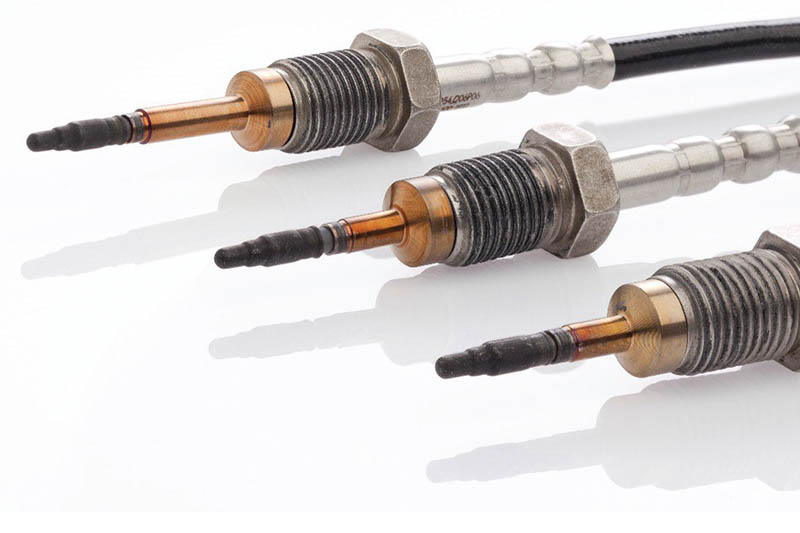How is an exhaust gas temperature sensor made?

Here is an opportunity to learn how an exhaust gas temperature sensor (EGTS) is manufactured and the principles of how it works, thanks to DENSO. According to Sales and Marketing Manager, Kevin Peacocke, VMs around the world rely on DENSO to design and deliver tailored solutions – he explains why.
As a result of our OE pedigree, independent workshops and the factors that supply them can also trust us to supply replacement EGTS that are a match for the vehicles they service and repair on a daily basis. However, it is also useful to know that there are two types of EGTS and to understand what distinguishes them and why.
Both types provide important information to the vehicle’s engine management system (EMS) to help it to manage engine performance by providing real time temperature data to the ECU. They both also use the physical principle that the electrical resistance of some materials varies when the temperature changes, but one type uses negative thermal coefficient (NTC), and the other positive thermal coefficient (PTC). However, the variation in resistance to determine a change in temperature, is common to each design.
It is worth noting that, in addition to managing engine performance, emission aftertreatment systems, such as the exhaust gas recirculation and the injection of diesel exhaust fluid, also rely on accurate temperature control to ensure their effective operation.
Typical failure
Irrespective of the type, certain vehicle models are more prone to issues with EGTS due to factors, such as the design, their placement and the complexity of the exhaust system. While it’s difficult to pinpoint specific models without greater context, common issues include:
- Vehicles with diesel particulate filters (DPF): Faulty EGTSs can trigger unnecessary DPF regeneration.
- High-performance or turbocharged engines: These engines often have more complex exhaust systems, making the sensors more susceptible to damage or failure
- Older vehicles: Over time, wiring and connections can degrade and become unreliable, and the overall efficiency of the engine and exhaust system, of which these sensors are a part, can also decline. Overheating, leakage, carbon deposits, clogged soot filters or excessive oil contamination are among the most common causes for EGTS failures.
To further aid the correct diagnosis of the problem, it’s always a good idea to check the specific service history and common issues for the model when analysing a vehicle that has symptoms that seem to relate to these kinds of temperature sensors.
Aftermarket solutions
We have included EGTS in our aftermarket range since 2013, although to date, these have been exclusively NTC type sensors. Recently however, the offering has been extended to include a range of PTC type sensors, which provide our customers with a wider opportunity to supply and fit an OE quality replacement solution.
Our team has been able to consolidate eight OE part numbers into a single sensor part number (DET-2018). This allows our customers to hold less stock, which reduces complexity, delivers more sales and, therefore, greater revenue.
New-to-range update
We have recently introduced 35 new EGTS that cater for 1,420 more applications, which are linked to 187 OE part numbers and cover in excess of 36 million vehicles.
Highlights include a host of VAG group vehicles from Audi to VW, as well as multiple applications for models from Chrysler, Jeep, Mercedes, Porsche and Smart. Together with our existing range, these EGTS provide an ideal replacement solution.








